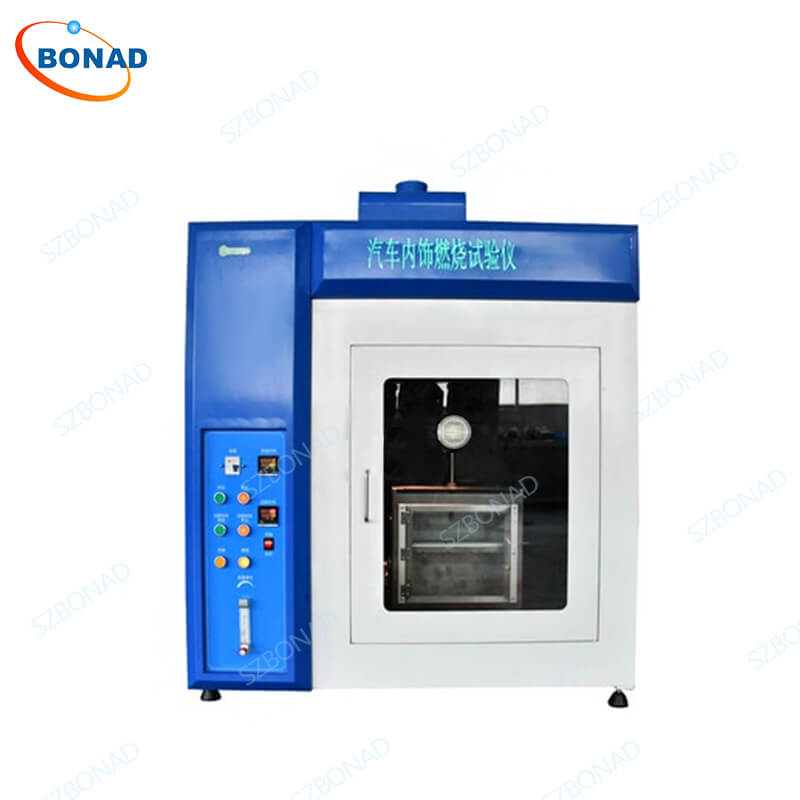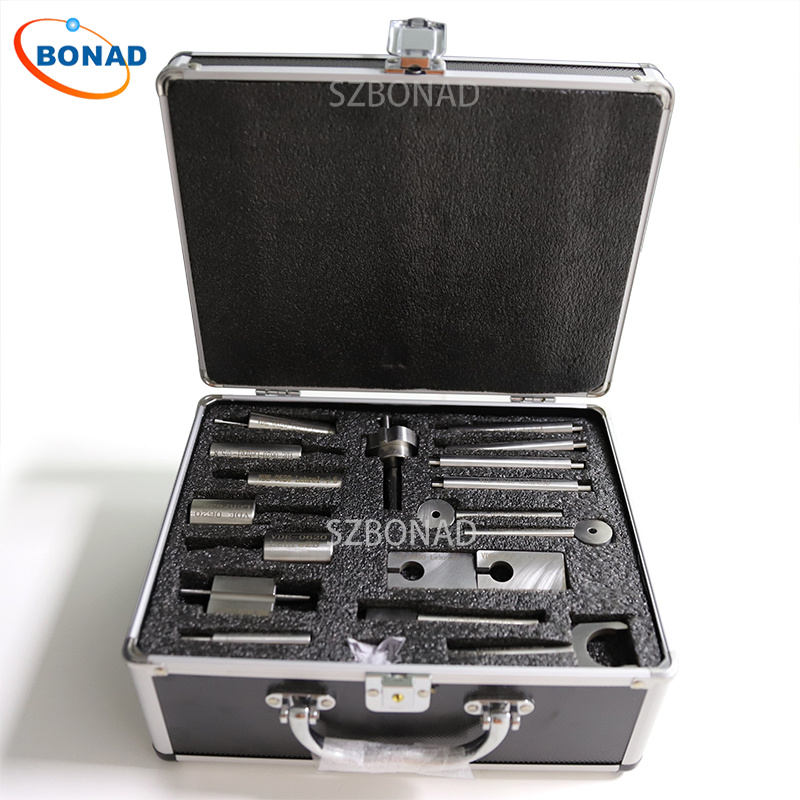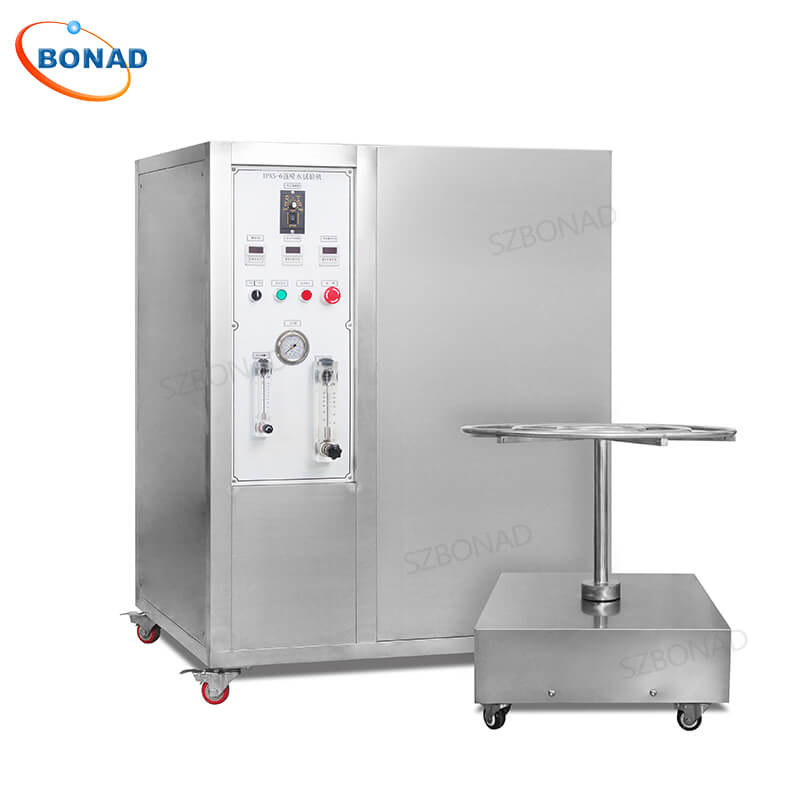The safety of automotive interiors is a top priority for manufacturers, regulators, and consumers alike. Flammability testing plays a crucial role in ensuring that materials used inside vehicles meet stringent safety standards. This article provides an in-depth analysis of flammability testing for car interiors, focusing on the BONAD BND-AIFT Car Interior Material Burning Tester—a state-of-the-art solution designed to evaluate the horizontal burning rate of automotive materials.
Introduction to Flammability Testing in Automotive Interiors
Automotive interior materials, such as seats, dashboards, and trims, are integral to passenger safety. In the event of a fire, the flammability of these materials can significantly impact the severity of injuries and the time available for occupants to evacuate. Therefore, assessing the flammability of these materials is essential for manufacturers aiming to comply with safety regulations and protect their customers. The BONAD BND-AIFT Car Interior Material Burning Tester is specifically designed to measure the horizontal burning rate of automotive materials, ensuring they meet established safety standards.

Why Flammability Testing Matters
Flammability testing serves several critical purposes in the automotive industry:
- Regulatory Compliance: Many countries have strict regulations regarding the flammability of automotive interior materials. Compliance with these standards is mandatory for manufacturers to legally market their products. For example, FMVSS 302, ISO 3795, and GB8410 are widely recognized standards that specify maximum burn rates to reduce the severity and frequency of burn injuries.
- Passenger Safety: Materials with high flammability can exacerbate fire situations, reducing the time available for occupants to evacuate and increasing the risk of injuries or fatalities. By selecting materials with lower flammability, manufacturers can enhance occupant safety.
- Material Selection: Understanding the flammability characteristics of materials helps manufacturers choose appropriate options that balance safety, cost, and performance.
Key Standards for Flammability Testing
Several international and regional standards govern the flammability testing of automotive interior materials:
- FMVSS 302: Specifies flammability requirements for materials used in the occupant compartments of motor vehicles, setting a maximum burn rate to increase evacuation time.
- ISO 3795: Outlines the method for determining the burning behavior of materials used in vehicle interiors.
- GB8410: A Chinese national standard focusing on the burning behavior of automotive interior materials.
Adhering to these standards ensures that materials used in vehicle interiors do not contribute to the rapid spread of fire, providing occupants with more time to evacuate safely in emergencies.
Features of the BONAD BND-AIFT Car Interior Material Burning Tester
The BONAD BND-AIFT is a specialized instrument designed to assess the flammability of automotive interior materials. Its key features include:
- Compliance with Multiple Standards: Designed in accordance with GB8410-2006, DIN-75, FMVSS 302, ISO 3795, and ASTM D5132, ensuring versatility across different regulatory frameworks.
- Test Gas Source: Utilizes gas or liquefied petroleum gas as the test gas source, with a recommendation to use high-quality gas for accurate results.
- Burner Specifications: Equipped with a burner featuring an inner diameter of 9.5±0.5 mm and a length of 100 mm, along with an air-adjusting hole to control flame characteristics.
- Adjustable Flame Height: Offers adjustable flame heights ranging from 20 mm to 100 mm, providing flexibility based on specific testing requirements.
- Automated Control System: Features an automatic control system with digital displays for temperature and time, enabling precise observation and recording.
- Test Chamber Volume: Provides a controlled environment with an inner volume of 0.05 m³.
- Material Construction: Constructed from durable materials like stainless steel or iron plate spray, ensuring resistance to high temperatures.
Application Across Different Vehicle Types
The BND-AIFT tester is suitable for evaluating materials used in various types of vehicles, including:
- Passenger Cars: Ensuring compliance with safety standards for standard passenger vehicles.
- Multi-Purpose Passenger Vehicles: Evaluating materials in vehicles designed for multiple passenger configurations while maintaining safety.
- Cargo Vehicles: Testing materials in vehicles primarily used for transporting goods, where interior materials may differ from those in passenger vehicles.
- Buses: Meeting stringent flammability requirements for larger passenger vehicles with higher occupant capacities.
Testing Methodology
The horizontal burning test conducted using the BND-AIFT involves the following steps:
- Sample Preparation: Specimens measuring 356 mm in length and 100 mm in width are prepared from the material to be tested.
- Conditioning: Samples are conditioned at a temperature of 23±2°C and a relative humidity of 50±5% for at least 24 hours before testing.
- Mounting: The specimen is mounted horizontally in the testing chamber, with the exposed side facing downward.
- Ignition: A flame is applied to the free end of the specimen for 15 seconds.
- Burning Measurement: The time taken for the flame to propagate between two marks placed 25 mm and 100 mm from the ignition point is recorded. The burning rate is then calculated based on this data.
By following this methodology, manufacturers can accurately assess the flammability of automotive interior materials and make informed decisions about material selection.


